Visitors to the village now generally arrive by land rather than water so will be greeted by our village sign. At its centre is a sailing barge, mysteriously embraced by a dinosaur. Few might realise that at the end of the nineteenth century, this was not only an agricultural but also a mining and industrial village: the sailing barge was essential for these activities.
The Village Sign
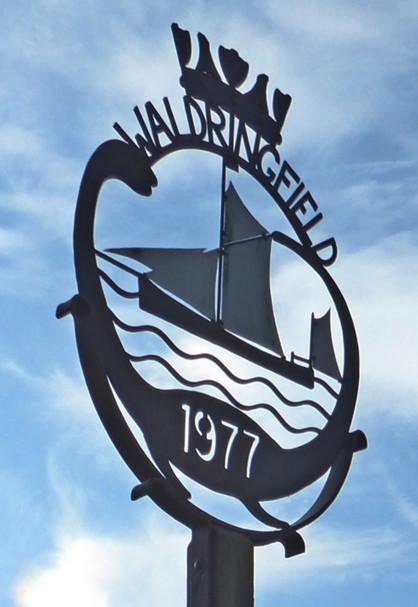
Waldringfield’s village sign, like several other East Coast villages, reflects some of the sailing barge activity in its history. Commemorating Queen Elizabeth II’s Silver Jubilee in 1977, the sails on the crown resemble boats going up and down river with waves denoting the Deben. The longship-style sail on the crown links to King Raedwald upriver. The supporting plesiosaur represents the coprolite industry and the central barge the cement and other businesses that relied upon water transport.
Location
Because of the seawalls, little of the Deben’s foreshore is now accessible. This makes the village, with its beach, a good place to trade by river. Waldringfield is halfway along the navigable Deben, and the only Deben riverside settlement of any size accessible at all states of the tide.
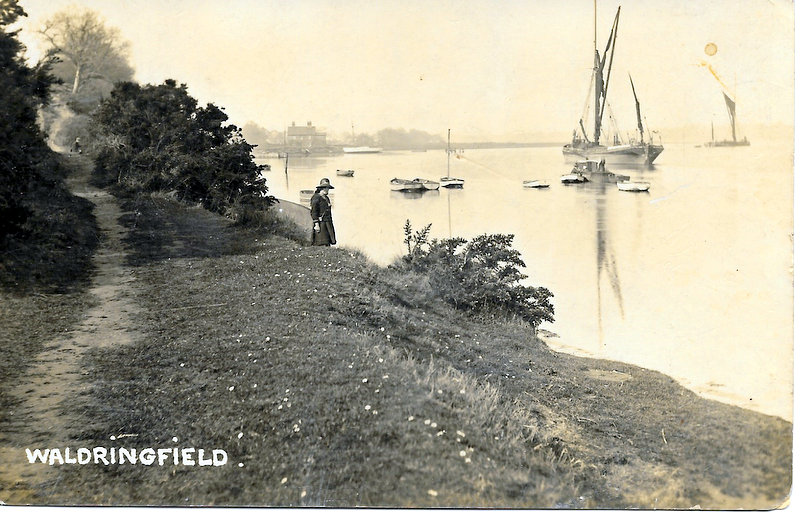
Sailing Barge Activity
There have been three main trades: ‘Muck and Straw’ from the early 1800s, Coprolite from the 1840s and Cement from the 1870s. All operated concurrently from the 1870s to 1890s but were gone by the early 1930s. There was also general trading of goods such as timber and coal.
The 1880s would have been the heyday with all three trades at their peak: one might picture the coprolite workers covered in reddish dust, cement workers in white and mud diggers stained blue. What colourful dust-ups they must have had at the Maybush. After this era, each industry ceased or declined to nothing.
There was then a sunset, or perhaps retirement era when some sailing barges, although not the same ones, enjoyed an afterlife as housebarges. Sadly, today, visits by a full-size barge are few and far between.
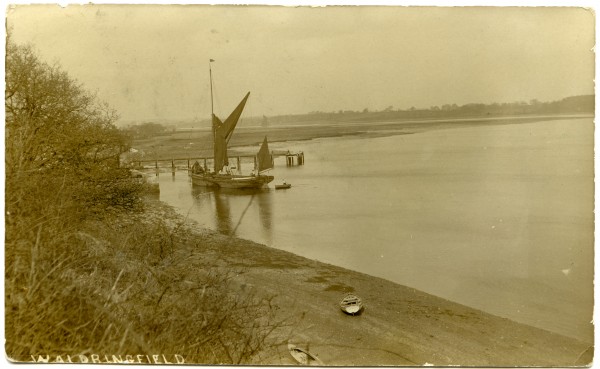
The sections below explore the different trades and may help to explain the dinosaur:
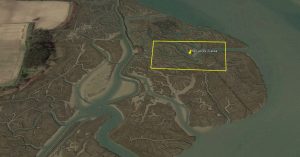
Mud Digging at Hemley for the Cement Works
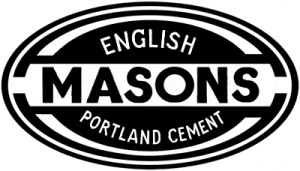
Masons (Cement) Barges
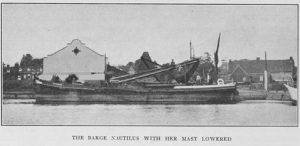
Coprolite from Waldringfield – SB Ammonite, Fossil, Nautilus
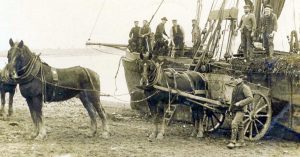
Muck and Straw Barges at Waldringfield
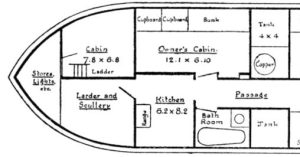
House Barges at Waldringfield
Image Credits and Sources
- Mersea Museum RG05_081: Courtesy Ron Green
- masons_logo-: cementkilns.co.uk
- Nautilus-from-1934-Yachting-Monthly-article-by-W.M.Blake_: 1934 Yachting Monthy article by W.M.Blake.